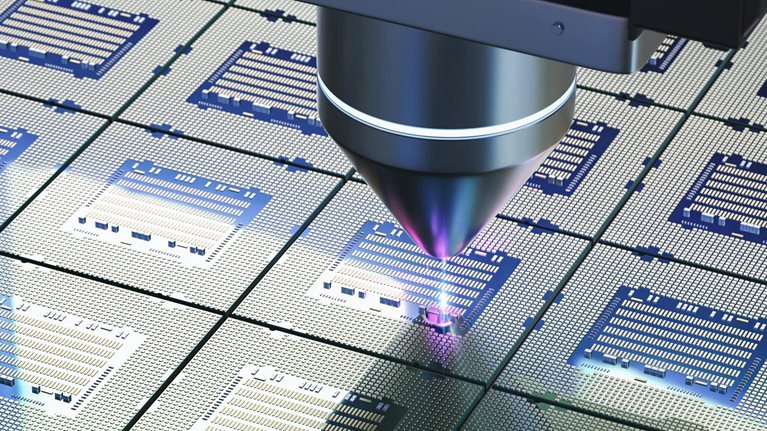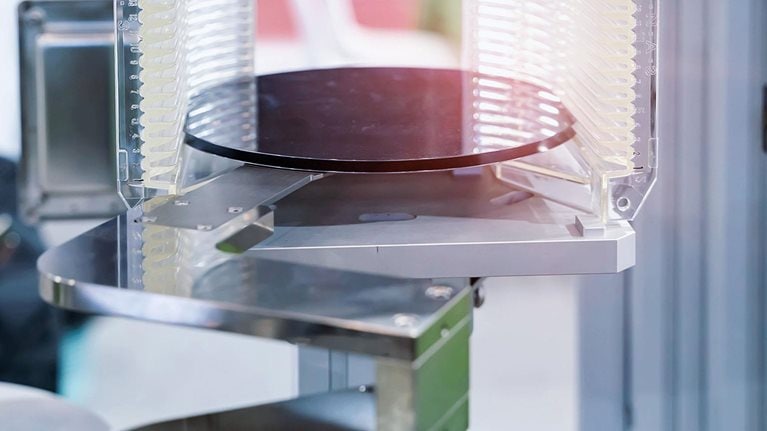As the connected-car ecosystem evolves, it will affect multiple value chains, including those for automotive, telecommunications, software, and semiconductors. In this report, we explore some of the most important changes transforming the sector, especially the opportunities that may arise from the growth of 5G and edge computing. We also examine the value that semiconductor companies might capture in the years ahead if they are willing to take a new look at their products, capabilities, organizational and operational capabilities, and their go-to-market approaches.
A new age of vehicle software and electronics
Four well-known technology trends have emerged as key drivers of innovation in the automotive industry: autonomous driving, connectivity, electrification, and shared mobility—such as car-sharing services (Exhibit 1). Collectively, these are referred to as the ACES trends, and they will have a significant impact on computing and mobile-network requirements. Autonomous driving may have the greatest effect, since it necessitates higher onboard-computing power to analyze massive amounts of sensor data in real time. Other autonomous technologies, over-the-air (OTA) updates, and integration of third-party services will also require high-performance and intelligent connectivity within and outside of the car. Similarly, increasingly stringent vehicle safety requirements require faster, more reliable mobile networks with very low latencies.

With ACES functions, industry players now have three main choices for workload location: onboard the vehicle, cloud, and edge (Exhibit 2).

To ensure that use cases meet the thresholds for technical feasibility, companies must decide where and how to balance workloads across the available computing resources (Exhibit 3). This could allow use cases to meet increasingly strict safety requirements and deliver a better user experience. Multiple factors may need to be considered for balancing workloads across onboard, edge, and cloud computing, but four may be particularly important. The first is safety, since workloads essential for passenger safety require extremely fast reaction times. Other considerations include latency, computing complexity, and requirements for data transfer, which depend on the type, volume, and heterogeneity of data.

Connected-car use cases today typically rely on either onboard computing or the cloud to process their workloads. For example, navigation systems can tolerate relatively high latency and may function better in the cloud. OTA updates are typically delivered via a cloud data center and downloaded via Wi-Fi when it is least disruptive, and infotainment content originates in the cloud and is buffered onboard to give users a better experience. By contrast, accident prevention workloads such as autonomous emergency-braking systems (AEBS) require very low latency and high levels of computing capability, which, today, may mean that they are best processed onboard the vehicle.
Advances in computing and connectivity are expected to enable many new and advanced use cases (Exhibit 4). These developments could alter where workloads are located. Of particular significance, the rollout of 5G mobile networks could allow more edge processing. Given the importance of these interrelated technologies, we explored their characteristics in detail, focusing on automotive applications.

The benefits of 5G and edge computing
5G technology is expected to provide the bandwidth, low latency, reliability, and distributed capabilities that better address the needs of connected-car use cases. Its benefits to automotive applications fall into three main buckets:
- Enhanced mobile broadband (EMBB): 5G may provide faster, more uniform user experiences with speeds reaching ten gigabits per second, five to ten times faster than 4G technology. This may enhance high-bandwidth use cases such as in-car infotainment, vehicle teleoperation, and real-time human-machine-interface rendering.
- Massive Internet of Things (IoT): By enabling up to a million connections per square kilometer, 5G networks could efficiently support a large number of concurrent connections from cars on the road, connected infrastructure end points, and end-user devices. This may eliminate the possibility that cars and other devices get disconnected from the mobile network inadvertently because of a large number of connections.
- Ultra-low-latency communications (URLLC): 5G latency can theoretically go down to one millisecond—five to 15 times better than 4G. This means 5G can combine high speed with high reliability, eliminating the need for trade-offs between the two. This is important for object tracking in autonomous vehicles, the protection and control of smart-grid critical infrastructure, and remote-control and process automation for applications including aviation and robotics.
These benefits could contribute to greater use of edge applications within the automotive sector. Workloads that are not safety-critical—infotainment and smart traffic management, for example—could start to shift to the edge from onboard or in the cloud. Eventually, 5G connectivity could reduce latency to the point that certain safety-critical functions could begin to be augmented by the edge infrastructure, rather than relying solely on onboard systems.
Would you like to learn more about our Semiconductors Practice?
Most current automotive applications today tend to rely exclusively on one workload location. In the future, they may use some combination of edge computing with onboard or cloud processing that delivers higher performance. For instance, smart traffic management systems may improve onboard decision making by augmenting the vehicle’s sensor data with external data (for example, other vehicles’ telemetry data, real-time traffic monitoring, maps, and camera images). Data could be stored in multiple locations and then fused by the traffic management software. The final safety-related decision will be made onboard the vehicle. Ultimately, large amounts of real-time and non-real-time data may need to be managed across vehicles, the edge infrastructure, and the cloud to enable advanced use cases. In consequence, data exchanges between the edge and the cloud must be seamless.
Shifting industry dynamics and new opportunities
The evolving automotive value chain will open many new opportunities for those within the industry and external technology players. The total value created by connected-car use cases could reach more than $550 billion by 2030, up from about $64 billion in 2020 (Exhibit 5).

Increased connectivity opens up opportunities for players across the automotive value chain to improve their operations and customer services. Take predictive maintenance in cars as an example. Aftermarket maintenance and repair provision now predominantly involve following a fixed interval maintenance schedule or reactive maintenance/repair. There is little visibility around the volume of vehicles that need to be serviced in a particular period, leading to inefficiencies in service scheduling, replacement parts ordering, and inventory, among others. Predictive maintenance using remote car diagnostics could improve the process by giving OEMs and dealers an opportunity to initiate and manage the maintenance process.
The pace of rollout of advanced connected-car use cases is highly contingent on the availability of 5G and edge computing. A variety of factors are converging to accelerate this. Demand is rising for these critical enablers, fueled by a proliferation of consumer and industry use cases. In the short term, value may be generated through enhancements to services already available with 4G, including navigation and routing, smart parking, centralized and adaptive traffic control, and monitoring of drivers, passengers, or packages.
We expect that greater 5G and edge availability may expand the list of viable use cases (technically and financially), boosting edge value exponentially. Looking to 2030, about 30 percent of our value estimate may be enabled by 5G and edge (from 5 percent in 2020), largely consistent with our cross-sectoral report on advanced connectivity.
Value creation could be accelerated by traditional players moving into adjacencies and by new entrants from industries not traditionally in the automotive value chain, such as communication system providers (CSPs), hyperscalers, and software developers. Players such as Intel, Nvidia, and the Taiwan Semiconductor Manufacturing Company are adding automotive-software capabilities, leading to greater synergies and vertical-integration benefits. In addition to accelerating value creation, new entrants may compete for a greater share of the total value.
Automotive-hardware value chains are expected to diverge based on the type of OEM. Traditional auto manufacturers, along with their value chains, are expected to see a continuation of well-established hardware development roles based on existing capabilities. Automobiles, components, devices, and chips for applications ranging from cars to the cloud may continue to be primarily manufactured by the companies that specialize in them. Nontraditional or up-and-coming automotive players could codevelop vehicle platforms with the established car OEMs and use OEMs’ services or contract manufacturers such as Magna Steyr for the traditional portions of the value chain.

The Titanium Economy
How Industrial Technology Can Create a Better, Faster, Stronger America
By Asutosh Padhi, Gaurav Batra, and Nick Santhanam
Established players may seek to increase their share by expanding their core businesses, moving up the technology stack, or by growing their value chain footprints. For instance, it is within the core business of semiconductor players to create advanced chipsets for automotive OEMs, but they could also capture additional value by providing onboard and edge software systems or by offering software-centric solutions to automotive OEMs. Similarly, to capture additional value, hyperscalers could create end-user services, such as infotainment apps for automotive OEMs or software platforms for contract manufacturers.
Emerging ecosystem archetypes
As players make strategic moves to improve their position in the market, we can expect two types of player ecosystems to form. In a closed ecosystem, membership is restricted and proprietary standards may be defined by a single player, as is the case with Volkswagen, or by a group of OEMs. Open ecosystems, which any company can join, generally espouse a democratized set of global standards and an evolution toward a common technology stack. In extreme examples—where common interfaces and a truly open standard exist—each player may stay in its lane and focus on its core competencies.
Hybrid ecosystems will also exist. Players following this model are expected to use a mix of open and closed elements on a system-by-system basis. For example, this might be applied to systems in which OEMs and suppliers of a value chain have particular expertise or core competency.
Exhibit 6 describes the advantages and disadvantages of each ecosystem model.

Value chain dynamics
Companies in the emerging connected-car value chain develop offerings for five domains: roads and physical infrastructure, vehicles, network, edge, and cloud. For each domain, companies can provide software services, software platforms, or hardware (Exhibit 7).

As automotive connectivity advances, we expect a decoupling of hardware and software. This means that hardware and software can develop independently, and each has its own timeline and life cycle. This trend may encourage OEMs and suppliers to define technology standards jointly and could hasten innovation cycles and time to market. Large multinational semiconductor companies have shown that development time can be reduced by up to 40 percent through decoupling and parallelization of hardware and software development. Furthermore, the target architecture that supports this decoupling features a strong middleware layer, providing another opportunity for value creation in the semiconductor sector. This middleware layer may likely be composed of at least two interlinked domain operating systems that may handle the decoupling for their respective domains. Decoupling hardware and software, which is a key aspect of innovation in automotive, tilts the ability to differentiate offerings heavily in favor of software.
New opportunities. In the software layer, companies could obtain value in several different ways. With open ecosystems, participants will have broadly adopted interoperability standards with relatively common interfaces. In such cases, companies may remain within their traditional domains. For instance, semiconductor players may focus on producing chipsets for specific customers across the domains and stack layers, OEMs concentrate on car systems, and CSPs specialize in the connectivity layer and perhaps edge infrastructure. Similarly, hyperscalers may capture value in cloud/edge services.
In closed ecosystems, by contrast, companies may define proprietary standards and interfaces to ensure high levels of interoperability with the technologies of their members. For example, OEMs in a closed ecosystem may develop analytics, visualization capabilities, and edge or cloud applications exclusively for their own use, in addition to creating software services and platforms for vehicles. Sources of differentiation for vehicles could include infotainment features with plug-and-play capabilities, autonomous capabilities such as sensor fusion algorithms, and safety features.
While software is a key enabler for innovation, it introduces vulnerabilities that can have costly implications for OEMs, making cybersecurity a priority (see sidebar, “The importance of cybersecurity,” for more information). Combined, the 5G and edge infrastructure could potentially offer increased flexibility to manage security events related to prevention and response.
Hardware players could leverage their expertise to offer advanced software platforms and services. Nvidia, for instance, has entered the market for advanced driver-assistance systems (ADAS) and is complementing its system-on-a-chip AI design capabilities with a vast range of software offerings that cover the whole automated-driving stack—from OS and middleware to perception—and trajectory planning.
Some companies are also moving into different stack layers. Take Huawei, which has traditionally been a network equipment provider and producer of consumer-grade electrical and electronic (E&E) equipment, and manufacturer of infrastructure for the edge and cloud. Currently, the company is targeting various vehicle stack layers, including the base vehicle operating systems, E&E hardware, automotive-specific E&E, and software and EV platforms. In the future, Huawei may develop vehicles, monitoring sensors, human–machine interfaces, application layers, and software services and platforms for the edge and cloud domains.
New opportunities and strategies along the automotive value chain
Greater automotive connectivity will present semiconductor players and other companies along the automotive value chain with numerous opportunities. In all segments, they may benefit from becoming solution providers, rather than keeping a narrower focus on software, hardware, or other components. As they move ahead and attempt to capture value, companies may benefit from reexamining elements of their core strategy, including their capabilities and product portfolio.
Semiconductor companies
The automotive semiconductor market is one of the most promising subsegments of the global semiconductor industry, along with the Internet of Things and data centers. Semiconductor companies that transform themselves from hardware players to solution providers may find it easier to differentiate their business from the competition’s. For instance, they might win customers by developing application software optimized for their system architecture. Semiconductor companies could also find emerging opportunities in the orchestration layer, which may allow them to balance workloads between onboard, cloud, and edge computing.
As semiconductor companies review their current product offerings, they may find that they can expand their software presence and produce more purpose-specific chips—such as microcontrollers for advanced driver-assistance, smart cockpit, and power-control systems—at scale by leveraging their experience in the automotive industry and in edge and cloud computing. Beyond software, semiconductor companies might find multiple opportunities, including those related to more advanced nodes with higher computing power and chipsets with higher efficiency.
To improve their capabilities related to purpose-specific chips, semiconductor players would benefit from a better understanding of the needs of OEMs and consumers, as well the new requirements for specialized silicon. Semiconductor companies can capitalize on their edge and cloud capabilities by building strategic partnerships with hyperscalers and edge players that have a strong focus on automotive use cases.
Tier 1 suppliers
Tier 1 suppliers could consider concentrating on capabilities that may allow them to become “tier 0.5” system integrators with higher stack control points. In another big shift, they could leverage existing capabilities and assets to develop operating systems, ADAS, autonomous driving, and human-machine-interface software for new cars.
To produce the emerging offerings in the automotive-computing ecosystem, tier 1 players might consider recruiting full-stack employees who see the bigger picture and can design products better tuned to end-user expectations. They might also want to think about focusing on low-cost countries and high-volume growth markets with price-differentiated, customized, or lower-specification offerings that have already been tested in high-cost economies.
OEMs
OEMs could take advantage of 5G and edge disruption by orienting business and partnership models toward as-a-service solutions. They could also leverage their existing assets and capabilities to build closed- or open-ecosystem applications, or focus on high-quality contract manufacturing. Key OEM high growth offerings could include as-a-service models pertaining to mobility, shared mobility, and batteries. OEMs, when seeking partnerships with other new and existing value chain players, need to keep two major things in mind: filling talent and capability gaps (for instance, in chip development) and effectively managing diverse portfolios.
CSPs
CSPs must keep network investments in lockstep with developments in the automotive value chain to ensure sufficient 5G/edge service availability. To this end, they may need to form partnerships with automotive OEMs or hyperscalers that are entering the space. For best results, CSPs will ensure that their core connectivity assets can meet vehicle-to-everything (V2X) use case requirements and create a road map to support highly autonomous driving. Connectivity alone represents a small part of the overall value to CSPs, however, and companies will benefit from expanding their product portfolios to include edge-based infrastructure-as-a-service and platform-as-a-service. Evolving beyond the traditional connectivity core may necessitate organizational structures and operating models that support more agile working environments.
Hyperscalers
Hyperscalers could gain ground by moving quickly to partner with various value chain players to test and verify priority use cases across domains. They could also form partnerships with industry players to drive automotive-specific standards in their core cloud and emerging edge segment. To determine their full range of potential opportunities—as well as the most attractive ones—hyperscalers should first analyze their existing assets and capabilities, such as their existing cloud infrastructure and services. They would also benefit from aligning their cloud and edge product portfolios or by extending cloud-availability zones to cover leading locations for V2X use case rollouts and real-world testing. If hyperscalers want to increase the footprint of their cloud and edge offerings within the automotive value chain, they could consider a range of partnerships, such as those with OEMs to test and verify use cases.
The benefits of 5G and edge computing are real and fast approaching, but no single player can go it alone. There are opportunities already at scale today that are not clearly addressed in the technological road map of many automotive companies, and not everybody is capturing them.
Building partnerships and ecosystems for bringing a connected car to market and capturing value are crucial, and some semiconductor companies are already forging strong relationships with OEMs and others along the value chain. The ACES trends in the automotive industry are moving fast; semiconductor companies must move quickly to identify opportunities and refine their existing strategies. These efforts will not only help their bottom lines but also could also allow tier 1s and OEMs to shorten the time-to-market for their products and services, which would accelerate the adoption of smart vehicles—and that benefits everyone.


